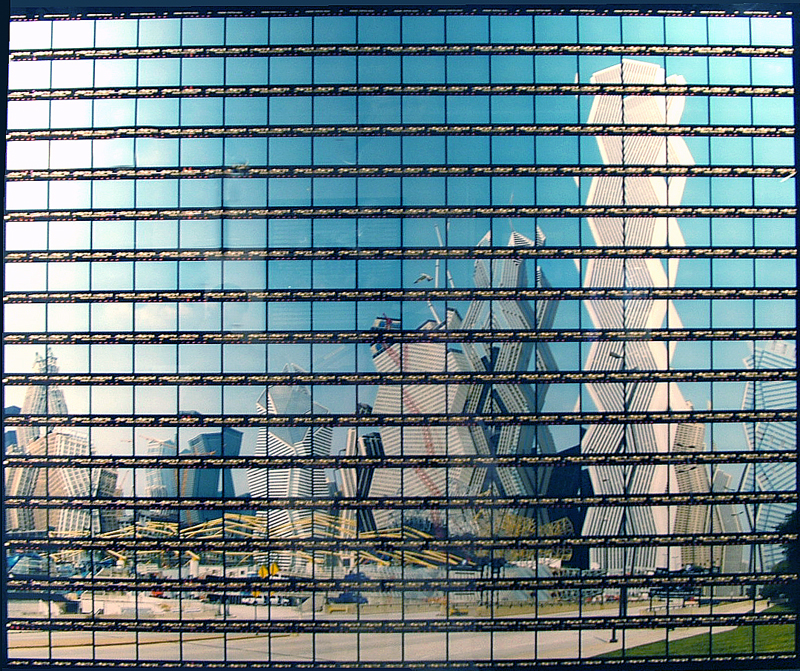Jay Pritzker Pavilion by Frank O. Ghery
Gehry's music shell construction, the Jay Pritzker Pavilion
The Jay Pritzker Pavilion is home to the Grant Park Music Festival and other free concerts and events in the Millennium Park of Chicago. It was named in memory of Chicago business leader Jay Pritzker, who with his wife Cindy, established the Pritzker Architecture Prize in 1979.
The result of a unique partnership between the City of Chicago and the philanthropic community, the 24.5-acre park features the work of world-renowned architects, planners, artists and designers. The Pavilion stands 120-feet high, with a billowing headdress of brushed stainless steel ribbons that frame the stage opening and connect to an overhead trellis of crisscrossing steel pipes. The trellis supports the sound system, which spans the 4,000 fixed seats and the Great Lawn, which accommodates an additional 7,000 people. This state-of-the-art sound system, the first of its kind in the country, was designed to mimic the acoustics of an indoor concert hall by distributing enhanced sound equally over both the fixed seats and the lawn. Since its opening in July 2004, Millennium Park has hosted millions of people, making it one of the most popular destinations in Chicago.
The architect of the Jay Pritzker Pavilion was Frank Owen Gehry (born as Ephraim Owen Goldberg), at February 28, 1929 in Toronto, Ontario, Canada. Frank Gehry is a very important architect and he was the winner of the National Medal of Art, applied his signature style to this revolutionary outdoor concert venue. He is also a Pritzker Prize winning architect based in Los Angeles, California. His buildings, including his private residence, have become tourist attractions. Many museums, companies, and cities seek Gehry's services as a badge of distinction, beyond the product he delivers.
His best known works include the titanium-covered Guggenheim Museum in Bilbao, Spain, Walt Disney Concert Hall in downtown Los Angeles, Weisman Art Museum in Minneapolis, Dancing House in Prague, Czech Republic, and his private residence in Santa Monica, California, which jump-started his career, lifting it from the status of "paper architecture", a phenomenon which many famous architects have experienced in their formative decades through experimentation almost exclusively on paper before receiving their first major commission in later years. Gehry's architecture has undergone a marked evolution from the plywood and corrugated-metal vernacular of his early works to the distorted but pristine concrete of his later works. However, the works retain a deconstructed aesthetic that fits well with the increasingly disjointed culture to which they belong.









